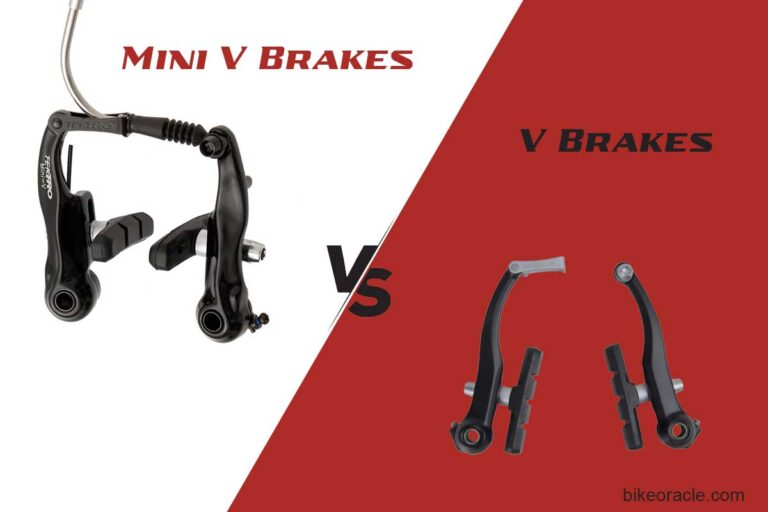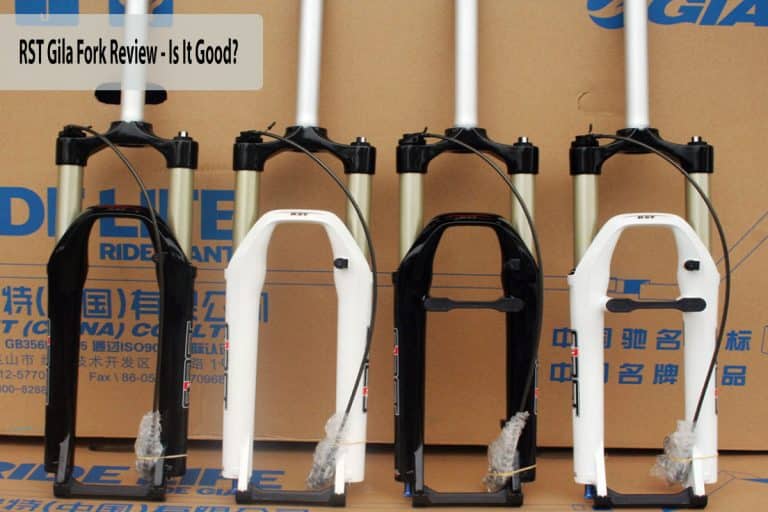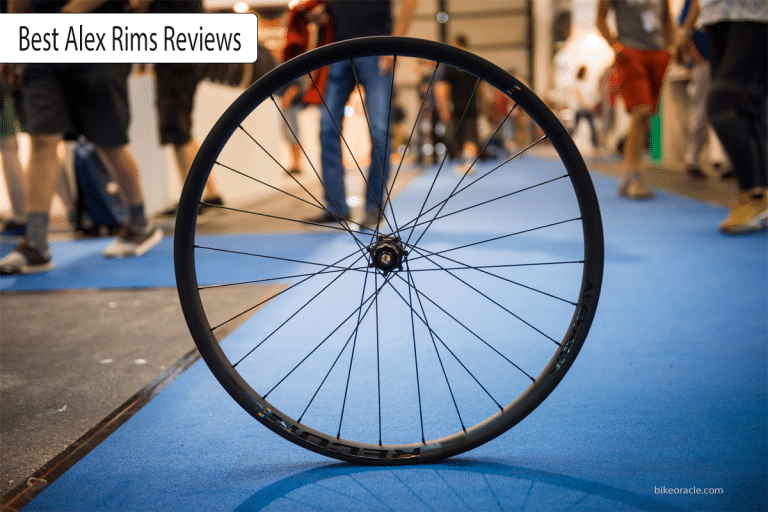Can you put 27.5 wheels on a 26 frame- Answered
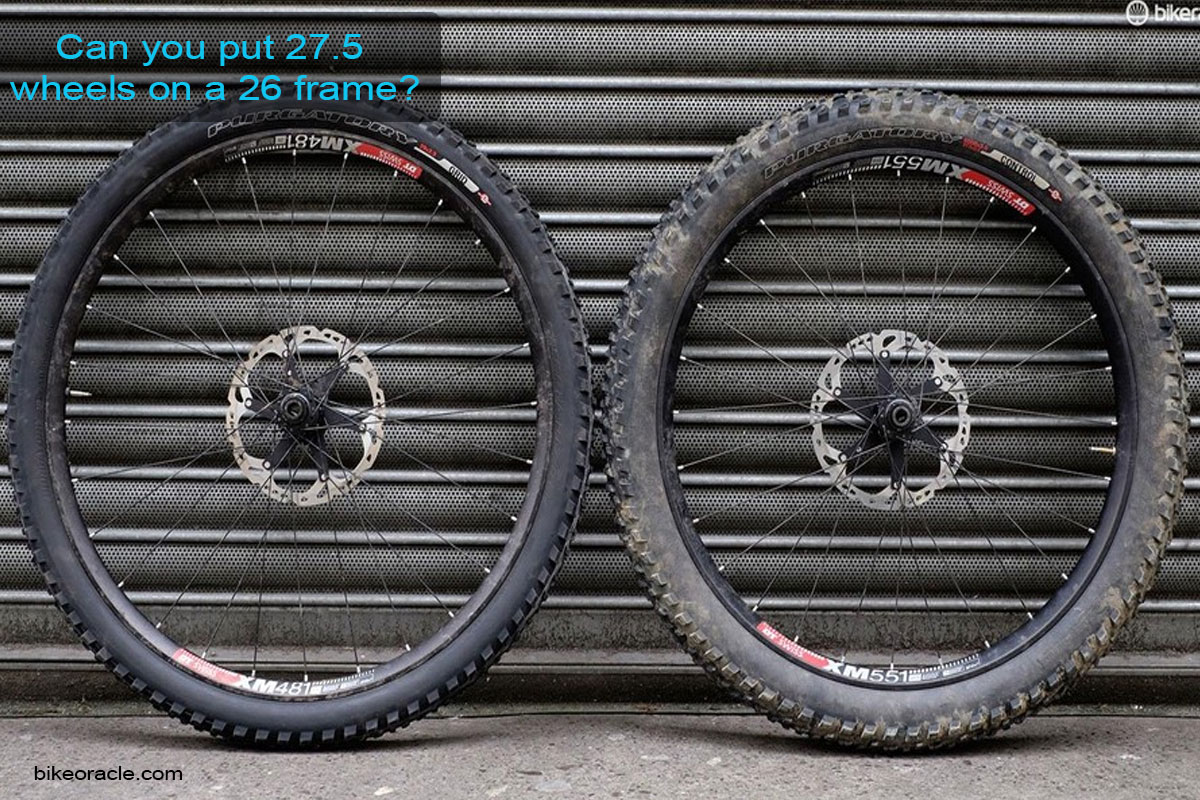
The debate surrounding whether it is possible to put 27.5 wheels on a 26 frame has intrigued many cyclists. Wheel and frame compatibility is crucial for optimal performance and safety.
In this article, we will delve into the subject, addressing the factors to consider, compatibility analysis, consequences of non-standard wheel sizes, conversion methods, case studies, expert opinions, and alternative options, and provide a final verdict on this intriguing topic.
Understanding Wheel and Frame Compatibility – The Basics
A. Explaining Wheel Sizes and Their Impact on Bike Performance
Wheel sizes play a vital role on bike performance. The size of the wheels directly affects the bike’s behavior, including handling, stability, and rolling resistance. The two most common wheel sizes found in the market are 26-inch and 27.5-inch.
The 26-inch wheel has been the standard for MTB bikes for many years. It offers advantages on agility, and maneuverability with a wide range of tire options. However, due to the smaller diameter, it may be less stable at high speeds compared to larger wheel sizes.
The 27.5-inch wheel, also known as the 650B, has gained popularity in recent years. It offers a middle ground between the nimbleness of the 26-inch wheel and the enhanced rollover capabilities of the larger 29-inch wheel. The larger diameter provides improved stability and smoother rolling over rough terrain.
B. Discussing the Standard Wheel Size for 26 Frames
The standard wheel size for 26 frames is the 26-inch wheel. Historically, it has been the go-to choice for mountain bikes, and numerous frames are designed specifically for this wheel size.
These frames are designed to accommodate the characteristics of a 26-inch wheel, including tire clearance, frame geometry, and suspension compatibility.
The 26-inch wheel size offers advantages in terms of maneuverability, quick acceleration, and a wide range of tire options. It has been proven to perform well in technical terrain, making it a popular choice among downhill and cross-country riders.
C. Introduction to the Concept of Wheel Size Conversion
The concept of wheel size conversion involves replacing the existing 26-inch wheels with larger wheels, such as the 27.5-inch option. This modification aims to improve stability, rollover capabilities, and enhanced traction.
Wheel size conversion typically requires careful consideration of various factors, including frame compatibility, fork clearance, tire clearance, and potential impacts on bike geometry. While it may be possible to convert a 26 frame to accommodate 27.5 wheels, it is crucial to assess the feasibility and potential consequences before proceeding with the conversion.
By exploring the possibilities and limitations of wheel size conversion, riders can make informed decisions regarding their desired performance characteristics and tailor their bikes to suit their specific riding style and terrain preferences.
Factors to Consider Before Converting Wheel Sizes
A. Frame Compatibility and Limitations
Frame Geometry: Examine the frame geometry to determine if it can accommodate larger wheels. Consider factors such as chainstay length, seat stay clearance, and tire clearance within the frame.
Rear Dropout Width: Check the rear dropout width to ensure it is compatible with the wider hub required for 27.5 wheels. Standard 26 frames typically have a 135mm rear dropout width, while 27.5 wheels often require a 142mm or 148mm width.
Frame Material and Strength: Consider the frame material and its ability to handle the stress of larger wheels. Aluminum frames are generally more adaptable to wheel size conversions compared to carbon frames.
B. Fork Compatibility and Adjustments
Axle Compatibility: Verify if the existing fork can accommodate the larger axle size required for 27.5 wheels. Most 26-inch forks have a 9mm quick-release axle, while 27.5 wheels often require a 15mm or 20mm thru-axle.
Suspension Travel: Determine if the fork’s suspension travel is appropriate for the intended use of the bike with the larger wheels. Adjustments may be needed to maintain the desired suspension characteristics.
Crown Clearance: Assess the clearance between the tire and the fork crown to ensure there is enough space for the larger wheel diameter. Insufficient clearance can result in tire rub and potential damage to the frame or fork.
C. Tire Clearance and Potential Issues
Frame Clearance: Measure the distance between the frame and the tire to ensure there is sufficient clearance. 27.5 wheels are typically larger in diameter and width, requiring more clearance within the frame and fork.
Chainstay and Seat Stay Clearance: Check if the chainstays and seatstays have enough clearance to accommodate the wider tires of 27.5 wheels. Insufficient clearance can result in tire rub and affect the bike’s performance.
Mud Clearance: Consider the impact of larger wheels on mud clearance. Increased wheel diameter and width may reduce mud clearance, leading to potential mud buildup and decreased traction.
D. Bottom Bracket Height and its Impact on Bike Geometry
Bottom Bracket Drop: Evaluate the bottom bracket drop, which is the vertical distance between the wheel axles and the bottom bracket. Converting to larger wheels may affect the bottom bracket height and alter the bike’s geometry.
Pedal Clearance: Determine if the increased bottom bracket height due to larger wheels affects pedal clearance. Higher bottom bracket heights can increase the risk of pedal strikes, especially in technical terrain.
It is crucial to thoroughly assess these factors before proceeding with a wheel size conversion to ensure compatibility and avoid potential issues that may arise from mismatched components or improper clearances.
Compatibility Analysis: Can You Put 27.5 Wheels on a 26 Frame?
A. Analyzing frame geometry and wheel diameter differences
Frame Geometry Analysis:
- Measure the head tube angle, seat tube angle, and chainstay length of the 26 frame.
- Compare the frame geometry measurements to the recommended specifications for 27.5 wheels.
- Analyze the potential impact on bike handling and stability based on the geometry differences.
Wheel Diameter Differences:
- Measure the diameter of the 26-inch wheels and compare it to the diameter of 27.5-inch wheels.
- Calculate the difference in wheel diameter to determine the variation in tire clearance and bottom bracket height.
- Evaluate the potential effect on ground clearance and pedal stroke risks.
B. Assessing potential issues with brake compatibility
Brake Reach and Clearance:
- Measure the reach of the existing brakes on the 26 frame, which refers to the distance from the brake mounting point to the rim.
- Compare the brake reach to the recommended reach for 27.5 wheels.
- Assess the potential need for longer-reach brakes to ensure proper compatibility.
Rotor Size:
- Measure the diameter of the current brake rotors.
- Check the compatibility of the existing rotor size with the 27.5-wheel setup.
- Consider the need for rotor size adjustments or upgrades to accommodate the larger wheels.
C. Examining tire clearance and potential modifications
Frame and Fork Clearance:
- Measure the space between the frame and fork to determine the current tire clearance for the 26-inch wheels.
- Compare the measured clearance to the tire width required for 27.5-inch wheels.
- Assess the need for potential modifications such as adjusting the frame/fork or using narrower tires.
Suspension Fork Compatibility:
- Evaluate the compatibility of the existing suspension fork with the larger 27.5 wheels.
- Check the available travel and clearance within the fork to accommodate the larger wheel diameter.
- Consider the need for fork adjustments or a potential upgrade for proper compatibility.
D. Considering the impact on handling and performance
Weight Distribution and Center of Gravity:
- Assess the potential shift in weight distribution due to the larger wheel diameter.
- Consider the effect on the bike’s center of gravity and how it may impact handling characteristics.
Handling Characteristics:
- Research and compare the handling characteristics of 26-inch and 27.5-inch wheel setups.
- Analyze factors such as maneuverability, responsiveness, stability, and cornering performance.
- Consider potential changes in these characteristics when converting to 27.5 wheels.
Performance Considerations:
- Evaluate the potential impact on climbing ability, acceleration, and overall speed.
- Consider any changes in rolling resistance and tire traction with the larger wheels.
- Assess the trade-offs and potential performance benefits of the wheel size conversion.
Conversion Methods and Modifications
A. Swapping out the Fork to Accommodate Larger Wheels
Assessing Fork Compatibility:
- Check the fork specifications for compatibility with 27.5-inch wheels.
- Ensure that the fork has sufficient clearance to accommodate the larger diameter and width of the 27.5 wheels.
Upgrading the Fork:
- Select a suitable fork designed specifically for 27.5-inch wheels.
- Look for a fork with appropriate axle-to-crown length and offset to maintain proper bike geometry.
- Consider a fork with adjustable travel to fine-tune the bike’s handling characteristics.
Professional Installation:
- Seek assistance from a professional bike mechanic to ensure proper installation and adjustment of the new fork.
- Make necessary adjustments to the headset and crown race to achieve proper alignment and fitment.
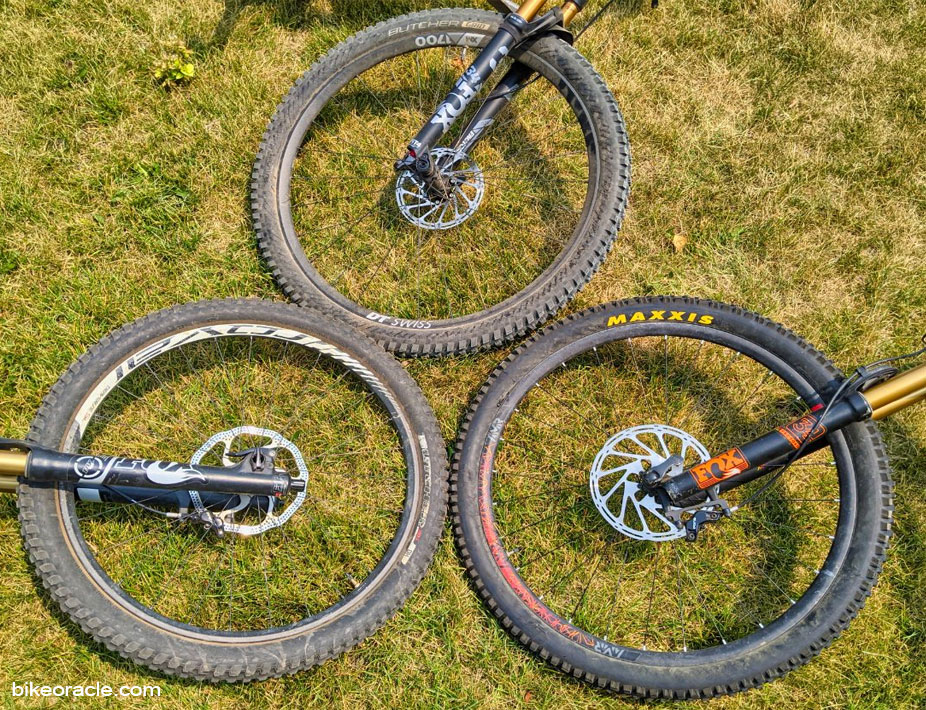
B. Adjusting the Frame to Accommodate 27.5 Wheels
Evaluating Frame Compatibility:
- Assess the frame’s geometry and design to determine if modifications are feasible.
- Consider the frame’s chainstay and seat stay clearance to accommodate the larger wheels.
Widening the Frame:
- Consult with a skilled frame builder or bike shop to evaluate the possibility of widening the frame.
- Assess the structural integrity of the frame and the potential impact on frame stiffness and durability.
Dropout Modifications:
- Explore the option of modifying the dropouts to accommodate the wider axle width of 27.5-inch wheels.
- Seek professional assistance to ensure precise alignment and fitment of the dropouts.
Professional Frame Modification:
- If deemed necessary, consult an experienced frame builder or bike shop to perform frame modifications.
- Ensure that the modifications comply with industry standards and maintain the frame’s structural integrity.
C. Potential Modifications to Ensure Proper Tire Clearance
Assessing Tire Clearance:
- Evaluate the frame and fork’s tire clearance to ensure compatibility with 27.5-inch tires.
- Consider the tire width and overall diameter to ensure sufficient clearance without compromising frame or fork integrity.
Adjusting Brake Mounts:
- Determine if modifications to the brake mounts are necessary to accommodate the larger wheel size.
- Consult a professional bike mechanic to ensure proper alignment and compatibility between the brakes and the new wheel size.
Customizing Frame and Fork:
- Explore potential modifications to the frame and fork to increase tire clearance.
- Seek guidance from a skilled frame builder or bike shop to ensure proper customization and alignment.
D. Installation of Appropriate Brakes for Compatibility
Evaluating Brake Compatibility:
- Assess the compatibility of the existing brakes with the new wheel size.
- Consider the reach and clearance required to accommodate the larger diameter of the 27.5-inch wheels.
Upgrading the Brakes:
- Select appropriate brakes designed to work with 27.5-inch wheels.
- Look for brakes with adjustable reach or longer brake arms to accommodate the increased wheel size.
- Consider the compatibility of the brake mounts and rotor size with the new wheel size.
Professional Brake Installation:
- Seek assistance from a professional bike mechanic to ensure proper installation and adjustment of the new brakes.
- Ensure that the brake pads make full contact with the rotor and that the braking system functions effectively.
Note: When performing any modifications or conversions, it is crucial to consult with skilled professionals, such as bike mechanics or frame builders, to ensure safety, compatibility, and optimal performance.
Case Studies and User Experiences
Examining real-life case studies and user experiences can provide valuable insights. Examples of successful conversions and their outcomes shed light on the possibilities and potential benefits.
Real-world experiences from riders who have attempted the conversion offer firsthand accounts of challenges faced during the process. Lessons learned and recommendations from experienced riders can guide others considering a wheel size conversion.
Expert Opinions and Advice
Insights from bike mechanics and industry professionals are invaluable when exploring wheel size conversions. Their expertise and experience provide valuable advice and recommendations for riders considering the conversion.
Addressing potential risks and concerns associated with non-standard conversions is crucial for ensuring a safe and successful outcome. Tips for maximizing compatibility and performance help riders make informed decisions and navigate the conversion process effectively.
Alternative Options: Upgrading to a Newer Frame
A. Exploring the benefits of upgrading to a frame compatible with 27.5 wheels
Improved Compatibility: Upgrading to a frame specifically designed for 27.5 wheels ensures optimal compatibility and performance. These frames are engineered to accommodate the larger wheel size without compromising handling or clearance.
Enhanced Performance: The larger wheel diameter of 27.5 inches offers certain advantages over the standard 26-inch wheels. It provides better rollover capabilities, improved traction, and increased stability, especially when navigating rough terrains.
Modern Features and Geometry: Newer frames often come with updated features and geometry, enhancing the overall riding experience. This can include improved suspension systems, lighter materials, and enhanced frame stiffness for better power transfer.
B. Considering the potential cost-effectiveness of a frame upgrade
Assessing the Investment: Upgrading to a newer frame compatible with 27.5 wheels involves a financial investment. However, it is essential to consider the potential long-term benefits and cost-effectiveness of the upgrade.
Future-Proofing: Investing in a compatible frame ensures that your bike remains relevant as technology and standards evolve. It allows you to take advantage of the latest wheel and component advancements without the need for further modifications or conversions.
Resale Value: Upgrading to a newer frame with 27.5 compatibility may increase the resale value of your bike. Many riders actively seek modern frames, making it a desirable option for potential buyers in the future.
C. Factors to consider when choosing a new frame and wheel size
Frame Material and Construction: There are different frame materials available, such as aluminum, carbon fiber, steel or titanium. Each material has its own characteristics in terms of weight, stiffness, durability. Choose the one that aligns with your riding style and preferences.
Geometry: Pay attention to the frame’s geometry, including the head tube angle, seat tube angle, chain stay length, wheel base, rake angle. These factors significantly influence the bike’s handling, stability, and responsiveness. Ensure the geometry suits your intended riding style, whether it’s aggressive trail riding or smooth endurance cycling.
Suspension Compatibility: If you use suspension components, ensure that the new frame is compatible with your existing fork and rear shock. Check for required travel, axle standards, and mounting options to ensure a seamless transfer of components.
Wheel Size Compatibility: Confirm that the frame is specifically designed for 27.5 wheels. Check for proper tire clearance and consider any potential limitations, such as maximum tire width or restrictions on tire type (e.g., clearance for plus-size tires).
Frame Size and Fit: Proper frame sizing is crucial for comfort, control, and overall riding enjoyment. Consider your body measurements, riding preferences, and fit adjustments when choosing the frame size. Consulting a professional bike fitter can help ensure an optimal fit.
By considering these factors, you can make an informed decision when upgrading to a newer frame compatible with 27.5 wheels. It offers the benefits of improved compatibility, enhanced performance, and future-proofing your bike, while also considering the cost-effectiveness and key factors in choosing the right frame for your specific needs.
Conclusion
In summary, the possibility of putting 27.5 wheels on a 26 frame requires careful evaluation of various factors. Wheel and frame compatibility, brake compatibility, tire clearance, and potential handling and performance impacts must be considered.
Conversion methods and modifications can address compatibility challenges, but they come with their own set of considerations. Real-life case studies, user experiences, and expert opinions provide valuable insights into the feasibility and challenges of wheel size conversions.
Alternative options, such as upgrading to a newer frame, offer additional avenues for achieving wheel size compatibility. Ultimately, the decision to pursue a wheel size conversion depends on individual preferences, intended riding style, and available resources.
